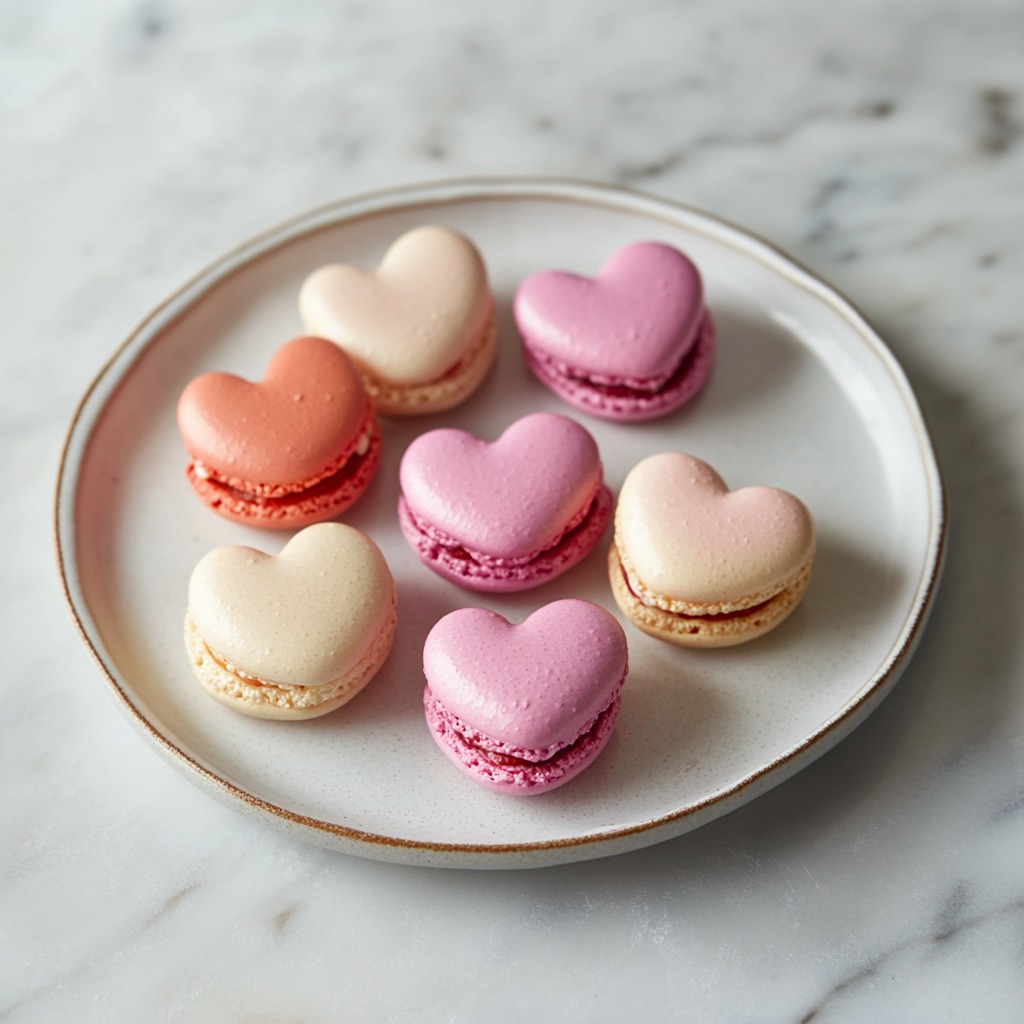 Pin it
Pin it
The gentle almond aroma combined with the smooth, rich center forms the quintessential macaron - and crafting them into hearts brings that special touch of affection. These French treats need time and exactness, but once you've got them down, you'll feel so proud. I've tweaked this recipe countless times in my own kitchen, and I'm sure these heart-formed goodies will soon be your go-to for all important celebrations.
My first try at heart macarons turned out more like shapeless lumps than hearts! But after some coaching from a French baker, I found out how to make them look right. These days my grandkids beg me to make them whenever there's something to celebrate.
Vital Ingredients Breakdown
- Powdered sugar (1 cup for shells, 1 cup for filling): needs to be totally smooth with no bumps for flawless shells
- Almond flour (½ cup): pick blanched, extra-fine almond flour for the best finish
- Egg whites (2 large): let them sit out for a full day to get them just right
- Granulated sugar (¼ cup): makes your meringue more sturdy
- Unsalted butter (½ cup): try to get European butter for a more luscious filling
- Pure vanilla extract (½ tsp shells, 1 tsp filling): always go for authentic extract, skip the fake stuff
Making Gorgeous Heart Macarons
- Step 1: Setting Up Your Foundation
- First, run your powdered sugar and almond flour through a sieve three times - don't skip this! Any tiny clumps will show up in your finished shells. Get your parchment ready and sketch heart shapes on the back as guides. Make sure your egg whites aren't cold and don't have any bits of yolk in them.
- Step 2: Building the Meringue
- Start mixing your egg whites slowly until they foam up. Then bump up the speed to medium-high and add your granulated sugar bit by bit. Keep going until you get firm, shiny peaks - when you pull up the mixer, the tip should stand up tall with just a tiny curl at the end.
- Step 3: The Key Folding Stage
- Put your dry mix into the meringue in three batches. Use a big spatula and fold with a J-shaped motion, getting the bottom and edges. Your batter should flow like melted ice cream - when you lift the spatula, the drizzle should sink back in within half a minute.
- Step 4: Creating Heart Forms
- Load up your piping bag with a round tip attached. Keep the bag straight up and down, squeeze a small blob, pull downward for the point, then make two matching curves at the top. Let off pressure gently and lift away without leaving a pointy top.
- Step 5: Waiting and Baking
- Let your piped hearts sit until they don't stick to your finger when touched. Bake them in a 300°F (150°C) oven for 18-20 minutes. You want to see those little feet form, but the tops shouldn't turn brown.
 Pin it
Pin it
When I was little, my mom always told me patience makes macarons special. Now I get it - hurrying any part leads to problems, but taking it slow creates something wonderful.
How Shells Take Shape
Letting the macarons rest helps form a skin on top, which creates those characteristic ridges during baking. A properly formed skin feels dry when lightly touched and looks a bit less shiny.
Getting Your Filling Just Right
The filling needs to be stiff enough to stay in place but soft enough to bite through without trouble. When putting them together, match up shells that look alike and push just until the filling reaches the edges.
Keeping Them Fresh
New macarons need a day in the fridge to get their best texture. After that, they'll stay good for about 5 days. If you want to keep them longer, you can freeze the unfilled shells for up to 3 months.
 Pin it
Pin it
Through my many years making these fancy cookies, I've found that success comes from watching the little things and respecting how the process works. Every time I bake these heart shapes, I'm reminded that baking really shows love. Seeing people's happy faces when they taste a perfectly made macaron makes all the careful work totally worth it.
Frequently Asked Questions
- → Why do you let macarons sit before baking?
- Sitting lets a dry surface form, which helps create the signature ruffled edges and ensures a shiny top.
- → Can macarons be prepped ahead of time?
- Absolutely. Store them filled in the fridge for a week or freeze for up to three months.
- → Why are my macarons empty inside?
- This can happen if the egg whites are overbeaten or if the oven's running too hot. Adjust whipping and check your oven's calibration.
- → Can almond flour be replaced with regular flour?
- Nope, almond flour is key for their texture and taste. Swapping it changes the whole thing.
- → What causes macaron shells to crack in the oven?
- The shells might've not dried enough before baking, or the oven temperature could be too high.
